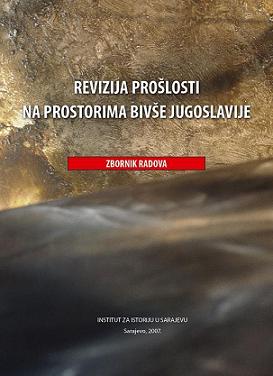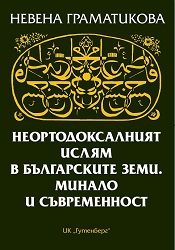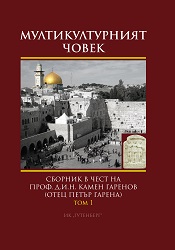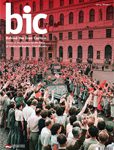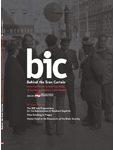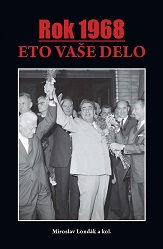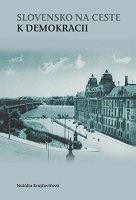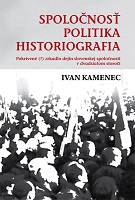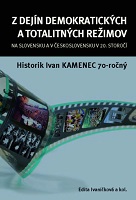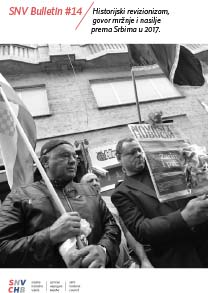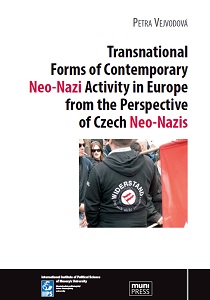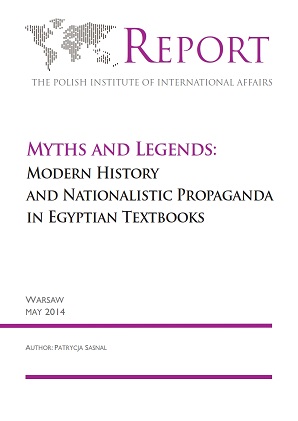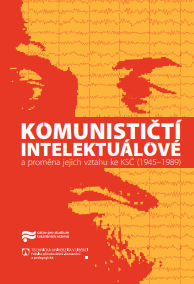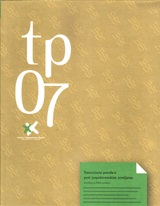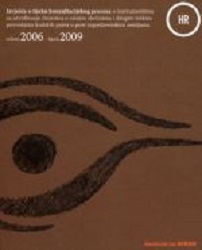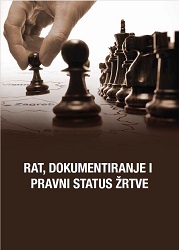Author(s): / Language(s): Croatian,Serbian
Ovaj izveštaj je rezultat sistematskog praćenja uspostavljanja tranzicione pravde u zemljama nastalim raspadom bivše Jugoslavije, koje sprovode organizacije za ljudska prava Fond za humanitarno pravo (Beograd) i Documenta (Zagreb). Dezintegraciju jugoslovenske federacije obeležila su tri oružana sukoba visokog intenziteta: u Hrvatskoj (1991-95.), Bosni i Hercegovini (1992-95.), i na Kosovu (1998-99.), u kojima je najmanje 130.000 ljudi izgubilo život, milioni su bili prinuđeni da napuste svoje domove, a stotine hiljada kuća su razorene. Uz to, do kraćih oružanih sukoba, sa relativno malim brojem žrtava, došlo je u Sloveniji (jun-jul 1991.) i Makedoniji (januar-novembar 2001). Više od 1.300 Srba, Roma i Albanaca, prepoznatih u albanskoj javnosti kao srpski saradnici, ubijeno je nakon oružanih sukoba i dolaska međunarodnih snaga na Kosovo, u vremenu od 12. juna 1999. do kraja 2000. godine. Sudbina oko 17.000 nestalih u regionu još uvek je nepoznata. Prelaz iz stanja oružanog sukoba i državne represije u period mira i izgradnje demokratskih institucija zahteva od ovih društava da se odrede prema masovnim kršenjima ljudskih prava iz bliske prošlosti. Skup mera koje vlasti i civilno društvo preduzimaju radi suočavanja s ovim kršenjiima prava čini kompleks tranzicione pravde, čiji su osnovni elementi utvrđivanje činjenica, suđenja, reparacije, i institucionalne reforme. U toku 2007. godine, u Bosni i Hercegovini i, u manjoj meri, u Hrvatskoj, napravljen je pozitivan korak u snaženju kapaciteta za suđenja za ratne zločine; u Srbiji, aktivnosti na procesuiranju ratnih zločina ostale su na nivou onih iz prethodnih godina, a u Crnoj Gori i na Kosovu bile su neznatne. Ni u jednoj post-jugoslovenskoj državi vlasti nisu pokazivale interes za uspostavljanje državnih komisija za istinu ili drugih tela za utvrđivanje činjenica o teškim kršenjima ljudskih prava u ratu, niti za reforme čiji bi cilj bio uklanjanje iz institucija pojedinaca koji su kršili ljudska prava pre, u toku, ili u periodu nakon oružanih sukoba. Dobijanje reparacija, na osnovu zakona ili sudskim putem, i dalje je za brojne kategorije žrtava bilo teško ostvarivo. SUĐENJA ZA RATNE ZLOČINE: Suđenja za ratne zločine su u 2007. godini, kao i ranije, predstavljala onaj segment tranzicione pravde koji je u post-jugoslovenskim zemljama izazivao najviše pažnje javnosti, i u kom su vlasti bile naročito preduzimljive. U Hrvatskoj je pred županijskim sudovima tokom godine održano ukupno 35 suđenja, za trećinu više nego u prethodnoj godini. Nepravosnažnim presudama završilo je 15 prvostepenih postupaka. Ranija pristrasnost po etničkom osnovu, u radu istražnih i tužilačkih organa, imala je odraza i u 2007. utoliko što se mnogim optuženim Srbima – njih više od polovine – sudilo u odsustvu, a osim toga samo se pripadnicima ove etničke grupe, a ne i Hrvatima, sudilo i za dela koja nisu uključivala smrtnu posledicu (pljačka i uništavanja imovine, i drugo). Sudovi u BiH su doneli ukupno 29 prvostepenih presuda (šest više nego u 2006.), a uz to je na kraju godine 19 suđenja bilo u toku. Specijalizovano Odeljenje za ratne zločine Tužilaštva BiH, kao i Veće za ratne zločine Suda BiH, sve više su snažili svoje kapacitete za procesuiranje ratnih zločina, tako da je u toku godine Veće izreklo deset presuda, a na kraju godine u toku je bilo devet suđenja. S druge strane, rad redovnih sudova i tužilaštava na lokalnom nivou bio je ograničen nedovoljnim kapacitetima za uspešno procesuiranje zločina. Etnički sastav optuženih pred Odeljenjem za ratne zločine i lokalnim sudovima bio je veoma raznolik, što bi moglo da ukazuje na povećanu spremnost bosansko-hercegovačkog pravosuđa da goni osumnjičene za zločine bez obzira na njihovu etničku pripadnost. U Srbiji su aktivnosti na procesuiranju ratnih zločina ostale na nivou onih iz prethodnih godina, odnosno održan je relativno mali broj suđenja (šest) i donete su samo dve prvostepene presude. Na Kosovu su 2007. godine održana samo dva suđenja za ratne zločine, a u Crnoj Gori 2007. godine nije održano nijedno. Ipak, istražni organi su vodili nekoliko istraga koje su crnogorski mediji i najšira javnost pažljivo pratili, tako da je krajem godine izgledalo da će u predstojećem periodu u tim predmetima biti podignute optužnice. U svim delovima bivše Jugoslavije, sa izuzetkom Crne Gore, uspostavljene su tokom decenije specijalizovane strukture za procesuiranje ratnih zločina, i bio je primetan pozitivan efekat njihovog rada, naročito u smislu veće profesionalnosti i ozbiljnijeg pristupa predmetima ratnih zločina nego ranije. Nastavljena je i saradnja tužilaštava iz BiH, Hrvatske i Srbije, a korisnu komunikaciju uspostavila su i tužilaštva Hrvatske i Crne Gore. S druge strane, većina problema koja je prethodnih godina ograničavala efikasnost napora da se privedu pravdi odgovorni za ratne zločine, nije otklonjena. Podrška političkih struktura krivičnom gonjenju osumnjičenih za ratne zločine bez obzira na nacionalnost bila je nedovoljna. Vlasti nisu stvorile uslove u kojima bi se svedoci osećali slobodnim da potpunim i istinitim iskazima pomognu utvrđivanju istine o zločinima i ulozi osumnjičenih. Ostao je nerešen problem nekažnjivosti za mnoge počinioce zločina u BiH koji sada žive, i stekli su državljanstvo, u Srbiji i Hrvatskoj, gde im je ustavom ili zakonom zagarantovano neizručivanje, dok BiH nije voljna da prepusti suđenja tim licima pravosuđu Hrvatske i Srbije. UTVRĐIVANJE ČINJENICA I KAZIVANJE ISTINE: Ni u jednoj od zemalja naslednica SFR Jugoslavije nije u 2007. godini bilo ozbiljnijih rasprava o mogućem uspostavljanju komisija za istinu. Još uvek ne postoji neko zvanično telo u post-jugoslovenskim zemljama koje bi na sistematski način, na nivou pojedine države ili više država, utvrđivalo činjenice o kršenjima ljudskih prava i humanitarnog prava u proteklom periodu. Komisija za utvrđivanje činjenica o stradanjima Srba, Hrvata, Bošnjaka, Jevreja i ostalih u Sarajevu u periodu 1992-95, osnovana odlukom Saveta ministara BiH u junu 2006. godine, nije u 2007. godini ostvarila nikakav napredak u prikupljanju podataka, prvenstveno zbog neslaganja među članovima Komisije o njenom mandatu. U parlamentarnim raspravama i u udžbenicima, u Srbiji, Hrvatskoj i BiH, preovladavalo je prikazivanje samo svog naroda kao žrtve. Krajem 2007. godine, u regionu je bilo oko 17.000 nerešenih zahteva za pronalazak nestalih lica. Broj identifikovanih u toku godine u Hrvatskoj, BiH i na Kosovu smanjio se u odnosu na prethodne godine, što je među udruženjima porodica nestalih povećalo bojazan da će proces nalaženja posmrtnih ostataka trajati još jako dugo, ili će dobrim delom ostati nezavršen. Prestanak rada Međunarodnog krivičnog tribunala za bivšu Jugoslaviju (MKTJ), objektivna ograničenja nacionalnih sudova u procesuiranju ratnih zločina (duga suđenja, smrtnost počinilaca i svedoka), minimiziranje zločina protiv drugih, kao i sporost u rešavanju sudbine nestalih lica, naveli su Fond za humanitarno pravo, Documentu i Istraživačko-dokumentacioni centar (Sarajevo), da u maju 2006. godine pokrenu inicijativu koja bi krajem decenije trebalo da rezultira osnivanjem zvanične komisije za utvrđivanje činjenica na regionalnom nivou o događajima iz devedesetih. Pomenute organizacije pažljivo su i postepeno tokom 2006. i 2007. godine stvarale prostor za jačanje podrške inicijativi unutar civilnog društva, pre prelaska u završnu fazu, odnosno pre no što zatraže od vlasti u post-jugoslovenskim zemljama da svojim autoritetom stanu iza osnivanje regionalne komisije. INSTITUCIONALNE REFORME: Ni u jednom delu bivše Jugoslavije u toku 2007. godine nije sprovedena “lustracija” niti šira institucionalna reforma čiji bi smisao bio da umanji mogućnost da državni organi u budućnosti krše ljudska prava. Jedine sveobuhvatne reforme institucija koje su preduzete u nekoj zemlji sa prostora bišve Jugoslavije, a čiji je deklarisani cilj bio uklanjanje sa položaja pojedinaca odgovornih za kršenje prava u devedesetim, jesu reforme policije i pravosuđa u BiH, provedene u periodu između 1999-2002. odnosno 2002-2004. godine. Srbijanski Zakon o odgovornosti za kršenje ljudskih prava, iz 2003. godine, ostao je mrtvo slovo na papiru, i u zemlji je jačalo uverenje da je vreme za “lustraciju” prošlo. U Hrvatskoj i Crnoj Gori ni u jednom periodu posle rata ključne političke grupacije nisu zahtevale slične reforme, zbog toga što su političke partije koje su bile na vlasti u devedesetim nastavile da dominiraju političkim životom, ili zato što postoji rasprostranjeno mišljenje u javnosti da je postupanje ondašnjih vlasti bilo generalno ispravno te stoga nema razloga za detaljnom proverom načina na koji su, sa stanovišta ljudskih prava, pojedini predstavnici vlasti delovali. Opoziciona Liberalna partija Crne Gore predala je predlog Zakona o lustraciji Skupštini Crne Gore 16. marta 2007. godine, ali se vladajuća Demokratska partija socijalista, koja drži vlast neprekidno od početka devedesetih, usprotivila usvajanju zakona. Na Kosovu, u pitanje se dovodi samo postojanje konteksta za eventualnu primenu lustracionih mera, jer su učesnici u zakonodavnoj, izvršnoj, sudskoj i administrativnoj vlasti iz devedesetih nakon 1999. godine u velikom broju napustili Kosovo, ili iz drugih razloga više ne participariju u vladajućim strukturama. REPARACIJE: U toku 2007. godine, u post jugoslovenskim zemljama primenjivale su se sledeće vrste reparacija: naknade (na osnovu zakona i na osnovu sudskih odluka); restitucija (povrat i obnova imovine); utvrđivanje sudbine nestalih; utvrđivanje činjenica i njihovo javno iznošenje; uvođenje činjenica o kršenjima prava u obrazovne materijale; i, podizanje spomen-obeležja. Naknade i restitucija su prethodnih godina uglavnom obezbeđeni za pripadnike većine, odnosno za žrtve na pobedničkoj strani rata, dok u odnosu na pripadnike manjine proces još uvek traje, a negde je na samom početku. Spomen-obeležja se podižu gotovo isključivo u znak sećanja na žrtve-pripadnike većinskog naroda. U koncipiranju i primeni zakona o reparacijama, u svim post-jugoslovenskim zemljama upadljivo su privilegovana vojna lica, odnosno članovi njihovih porodica, u odnosu na civile. U svim delovima bivše Jugoslavije, izvestan broj civilnih žrtava rata i osoba čija su ljudska prava ozbiljno kršena u prethodnom periodu nastojao je da ostvari naknadu štete sudskim putem. Broj tužilaca je bio relativno mali, zbog neizvesnosti u pogledu mogućeg dobijanja spora, nepostojanja delotvornih sistema besplatne pravne pomoći i nepostojanja zakonskih rešenja kojima bi se žrtve izuzele od plaćanja sudskih taksi i troškova postupka u slučaju gubitka spora.
More...
